
Roots
To hold a strand of textured hair is to cradle a filament of time, a living archive whispered across generations. It carries the weight of sun-drenched savannahs, the resilience of journeys untold, and the silent strength of those who came before us. This is not merely a biological fact; it is a profound connection, a tangible link to the ancestral wisdom that shaped identities and guided survival.
For Black and mixed-race people, our hair is a testament to memory, a repository where practices, struggles, and triumphs reside, etched into the very helix of each curl, coil, or wave. This understanding helps us appreciate how hair care serves as a repository of Black and mixed-race heritage , deeply rooted in our shared past.
The earliest echoes of this inheritance resonate from the source itself ❉ the intricate biological design of textured hair. Unlike the straight, often cylindrical strands prevalent in other populations, textured hair emerges with a distinct elliptical or flattened cross-section, its unique shape dictating the pattern of its curl. This characteristic curvature, along with the varying distribution of keratin proteins, creates a hair shaft that is strong yet often more delicate, more prone to dryness, and requires specific attention.
The ancestral communities, long before the advent of modern science, grasped these truths intuitively. Their practices, passed down through oral traditions and communal rituals, reflected a deep, empirical understanding of what kept their hair healthy and vibrant in diverse environments.

Hair Anatomy and Its Ancestral Resonance
Consider the follicle , the tiny organ beneath the scalp where each hair strand originates. For textured hair, this follicle is often curved, causing the hair to grow in a spiral or helical pattern as it emerges. This curvature influences everything from the hair’s propensity to tangle to its natural volume. The cuticle, the outermost layer of the hair shaft, with its overlapping scales, might be more lifted in textured hair, contributing to its porosity and influencing how it absorbs and retains moisture.
These anatomical distinctions, though explained by contemporary trichology, align with observations made by our ancestors, whose care regimens naturally addressed these characteristics. They observed the hair’s tendency to coil, its need for moisture, and its unique response to environmental conditions, developing methods that honored its inherent structure.
The Melanin Distribution within textured hair also bears mentioning. While melanin provides hair with its rich spectrum of hues, its arrangement can influence the hair’s tensile strength and elasticity. Our ancestors, living in various climates across Africa and the diaspora, crafted practices that worked in concert with these innate qualities.
They understood that external elements—the sun, the wind, the aridity or humidity of the air—could alter the hair’s feel and appearance. Their knowledge, accumulated over centuries, became a practical science, a living library of adaptation.
Hair’s intrinsic structure, from the curved follicle to the cuticle’s unique posture, mirrors the deep wisdom of ancestral care practices.
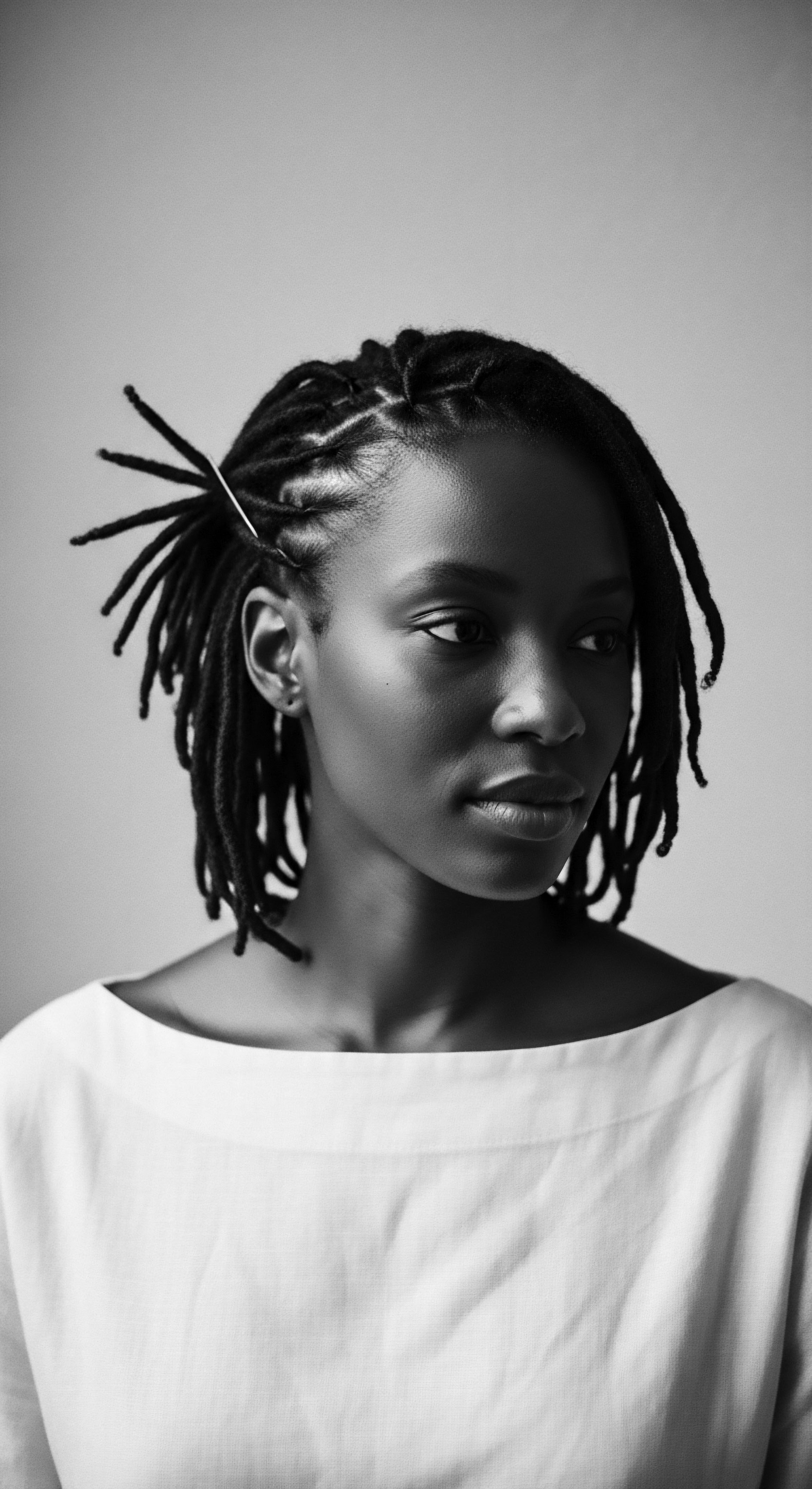
Language and the Living Lexicon
The very language we use to speak of textured hair often carries whispers of heritage . Terms like ‘kinky,’ ‘coily,’ ‘wavy,’ and ‘curly’ categorize patterns, yet within Black and mixed-race communities, these words hold more than scientific description. They describe an identity, a shared experience, a connection to a specific type of beauty that has often been misunderstood or devalued by dominant societal standards. The nomenclature we employ today, though sometimes debated for its origins or precision, helps us classify and understand the diversity of textures that are part of our ancestral legacy.
Many traditional African societies held specific terms for hairstyles, each denoting social status, age, marital standing, or even religious belief. In West African societies in the 1400s, for example, a person’s hairstyle could tell a great deal about their social status, marital status, wealth, age, ethnicity, or even their surname. This signifies a depth of communication, a language of hair where every twist, braid, or adornment spoke volumes about one’s place within the communal fabric. This rich lexicon, though perhaps not fully documented in its ancient forms, finds its echoes in the descriptive terms we use today, signifying how a cultural understanding of hair persists.

Growth Cycles and Environmental Factors
Hair growth cycles—anagen (growth), catagen (transition), and telogen (resting)—are universal. Yet, for textured hair, the characteristics of these cycles can intersect with ancestral practices and environmental adaptations. The slower growth rate often associated with tightly coiled patterns meant that protective styles, which minimize manipulation and allow hair to rest, were not merely aesthetic choices but practical necessities for maintaining length and health.
Our forebears intuitively understood that constant manipulation or exposure to harsh elements could compromise the hair’s integrity. Their solutions, refined over generations, became the blueprint for contemporary care regimens.
The historical environmental conditions, such as arid climates, also shaped how hair care evolved. Ingredients rich in moisture and protective properties were sought out and incorporated into daily rituals.
- Shea Butter ❉ A staple across West Africa, derived from the nuts of the shea tree, known for its moisturizing and protective properties against harsh climates.
- Argan Oil ❉ From Morocco, valued for its nourishing fatty acids and antioxidants, shielding hair from environmental damage.
- Baobab Oil ❉ Extracted from the seeds of the ‘tree of life,’ used in various African communities for its emollient qualities to soften and condition hair.
These natural gifts from the land became integral to the ancestral “pharmacopeia” of hair care. They underscore how the understanding of hair’s biology, its response to nature, and the practical knowledge of specific botanicals formed the bedrock of a rich heritage of care.

Ritual
The hands that tend to textured hair often perform more than a simple task; they enact a living tradition, a ceremonial passing of knowledge from one generation to the next. The rituals of hair styling and care have long served as a vital channel through which Black and mixed-race heritage flows, transforming individual strands into collective statements of identity, resistance, and artistry. Every braid, every twist, every communal gathering around the act of styling echoes practices that stretch back centuries, underscoring how hair care provides a repository of cultural memory and ingenuity.
The influence of hair care on traditional and modern styling is undeniable. Styles are not static adornments; they are dynamic expressions of identity, social status, and historical moments. Consider the Cornrows, a ubiquitous style with deep roots. Originated in Namibia around 3500 BCE, different braiding techniques and patterns have evolved over time.
During the transatlantic slave trade, the significance of cornrows deepened in unforeseen ways. Enslaved people, facing the horrific erasure of their identities, utilized cornrow patterns as a covert communication system. They braided maps of escape routes into their hair, and some even hid rice and seeds within their plaits to sustain them on their desperate journeys to freedom (Ayana Byrd & Lori L. Tharps, 2001).
This practice, born of immense struggle, underscores the profound role hair played in survival and resistance. The cornrow, therefore, became a symbol of defiance, intelligence, and the enduring human spirit, a testament to how hair care serves as a repository of knowledge and resilience.

Protective Styling Through Time
Protective styles, which minimize manipulation and shield hair from environmental stressors, are not a modern invention. They are a timeless strategy inherited from ancestors who understood the fragility of textured strands.
| Traditional Practice Braids (e.g. cornrows, individual plaits for women and men, sometimes with extensions of plant fibers or animal hair) |
| Modern Application and Heritage Link Still used globally for protection, length retention, and cultural expression. They symbolize resilience and continuity. |
| Traditional Practice Twists (two-strand twists, flat twists) |
| Modern Application and Heritage Link Similar to braids, these styles reduce tangling and manipulation, often serving as a foundation for other styles or simply as a protective look. |
| Traditional Practice Locs (often referred to as dreadlocks) |
| Modern Application and Heritage Link Ancient roots traced to various cultures, including ancient Egypt and spiritual practices. Today, they signify spiritual connection, cultural pride, and a rejection of Eurocentric beauty standards. |
| Traditional Practice These styles demonstrate an unbroken line of wisdom, adapted yet fundamentally preserved across generations. |
The art of creating these styles often involved communal gatherings, occasions for bonding, storytelling, and the transmission of skills. The rhythmic pull of a comb, the chatter of voices, the passing of oils—these moments were not just about styling hair; they were about affirming community, solidifying bonds, and reinforcing a shared heritage . This communal aspect remains a cornerstone of textured hair care, transforming a simple routine into a shared celebration.

Natural Styling and Defining Texture
Defining natural texture has always been a key aspect of textured hair care. Before commercially available products, people used natural ingredients to condition, hold, and enhance their coils and curls. Plant-based gels, often from aloe vera or flaxseed , were used to provide hold and moisture.
This ancient knowledge now sees a resurgence in the natural hair movement, where traditional ingredients and methods are being rediscovered and adapted for contemporary use. The emphasis on allowing the hair to express its inherent pattern, rather than forcing it into a desired shape, speaks to a deeper acceptance of one’s natural form, a legacy of self-acceptance embedded in our heritage .
Hair rituals, beyond aesthetic, are powerful acts of community, resistance, and identity affirmation.
One might consider how the Afro, a style that gained prominence during the Black Power Movement of the 1960s and 1970s, served as a potent symbol. It was a rejection of forced assimilation and an assertion of self-acceptance, a visual manifesto against societal pressures to conform to Eurocentric beauty standards. As Lori Tharps, co-author of Hair Story, observes, the Afro became a physical manifestation of rebellion, a declaration to the establishment ❉ “Accept us and appreciate us for who we are.” This powerful moment in history underscores how hair, and the care taken to style it, becomes a repository of defiance and pride within a people’s heritage .

Tools of the Tradition
The tools used in textured hair care also bear the imprint of heritage . While modern implements like wide-tooth combs and diffuser attachments are commonplace today, their predecessors often served similar purposes using natural materials.
- Wooden Combs ❉ Carved from indigenous woods, these were used to detangle and style, their smooth surfaces designed to glide through coily strands with minimal breakage.
- Hair Picks ❉ Though modernized, the pick’s function—to lift and create volume without disturbing curl patterns—has historical parallels in tools used to shape and aerate traditional styles.
- Adornments ❉ Beads, cowrie shells, and precious metals were not merely decorative; they often carried symbolic meaning, denoting social status, spiritual beliefs, or milestones in a person’s life.
These tools, whether crafted from bone, wood, or modern plastics, are extensions of the hands that carry out the rituals of care. They represent ingenuity and adaptation, the continuing legacy of finding solutions to the unique needs of textured hair. Each tool, then, holds a story, a connection to the resourceful spirit that has sustained this heritage through generations.
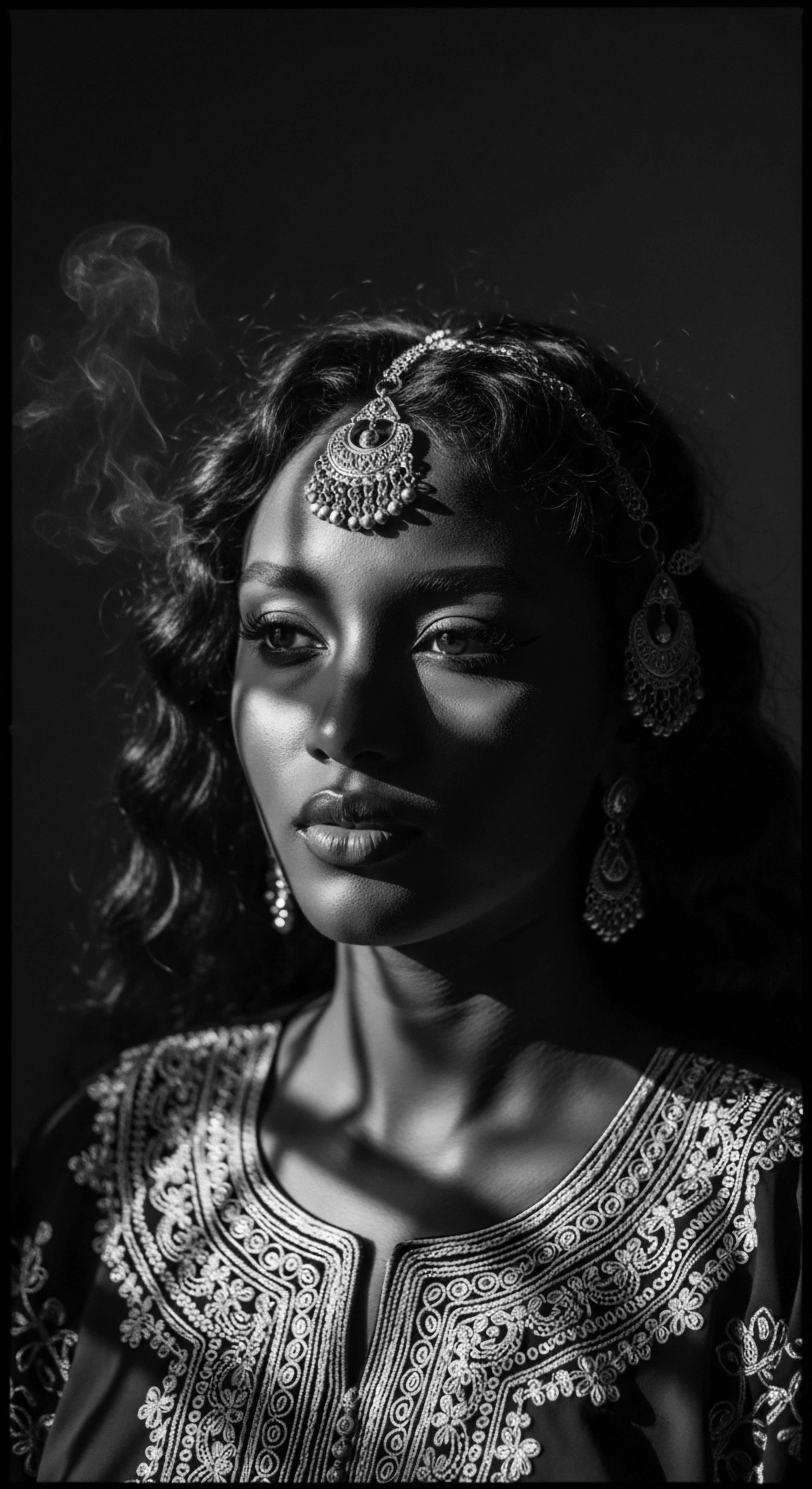
Relay
The path of hair care for Black and mixed-race people is a continuous relay, a passing of the torch from ancient wisdom to contemporary understanding, ensuring the heritage of textured hair remains a vibrant, living entity. It is a dialogue between ancestral practices and modern scientific inquiry, each informing the other to enhance holistic wellness and address challenges with a deeper resonance. This ongoing conversation demonstrates how hair care serves as an active repository, evolving yet always grounded in its roots.
Modern trichology, in its study of hair and scalp health, frequently validates insights long held within ancestral wisdom. The understanding of the hair’s cuticle structure , its tendency to lift in highly textured hair, and the subsequent need for moisture retention, aligns with the traditional emphasis on emollients and protective styles. What our ancestors discovered through generations of observation and practice, contemporary science now explains at a molecular level, offering a deeper appreciation for their ingenuity. This scientific validation reinforces the authority and value of our hair heritage .

Building Personalized Regimens
The creation of a personalized textured hair regimen today often draws, whether consciously or unconsciously, from historical precedents. The layered approach to hair care—cleansing, conditioning, moisturizing, and protecting—finds parallels in the meticulous and often lengthy rituals observed in ancient African societies. These were not quick processes; they were acts of devotion, requiring time, patience, and specific ingredients.
A personalized regimen can be seen as a modern interpretation of this historical dedication. It recognizes the unique needs of an individual’s hair, influenced by genetics (a biological inheritance), environmental factors, and lifestyle. This approach allows for adaptation while respecting the foundational principles of care that have been passed down.
For instance, the traditional use of natural oils to seal moisture finds its modern counterpart in the “LOC” or “LCO” methods (Liquid, Oil, Cream / Liquid, Cream, Oil), which prioritize layering products to maximize hydration retention. These modern acronyms simply codify ancient, intuitive practices.
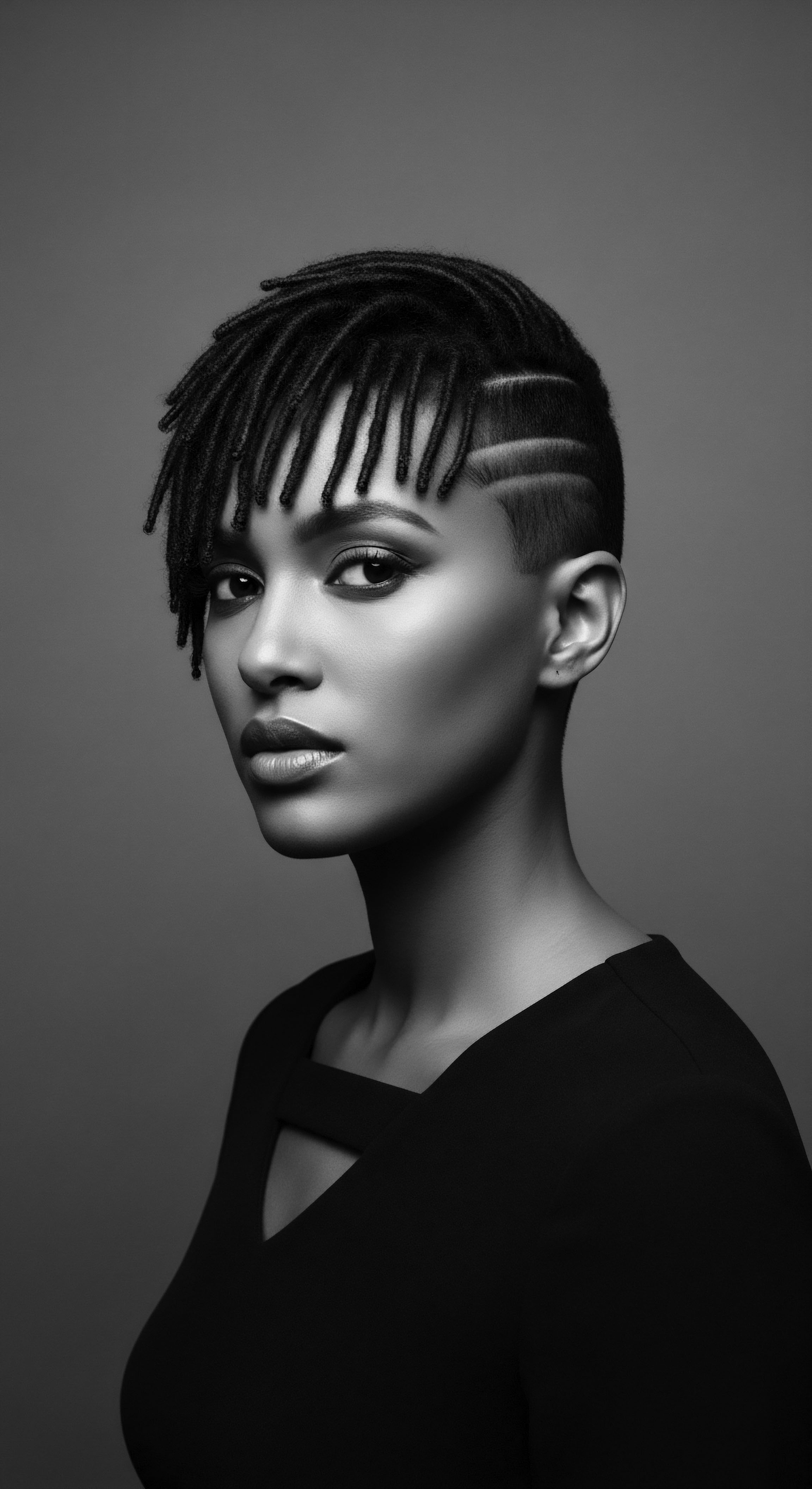
Nighttime Sanctum and Bonnet Wisdom
The nighttime routine holds particular significance within the care of textured hair, and the bonnet itself is a tangible symbol of heritage and protection. The necessity of protecting hair during sleep to prevent tangling, breakage, and moisture loss is a wisdom passed down through generations. Before the widespread availability of satin bonnets, women used silk scarves or fabric wraps. These were not merely fashion accessories; they were essential tools for hair preservation, ensuring that the day’s styling efforts were not undone by friction against rough surfaces.
The bonnet, therefore, is more than an accessory; it is a piece of cultural apparatus. It signifies self-care, foresight, and a quiet act of preserving one’s crown. The practice of wrapping hair at night, seen in various forms across the diaspora, connects individuals directly to a lineage of care and resilience. It is a shared understanding, a silent agreement among many Black and mixed-race individuals about the importance of protecting hair, a practical wisdom rooted in ancestral knowledge .
The bonnet, a simple accessory, embodies generations of ancestral wisdom dedicated to preserving textured hair’s vitality.

Ingredients Connecting Past and Present
The ingredients central to effective textured hair care often possess a history as rich as the hair itself. Many contemporary formulations draw from or are inspired by ingredients utilized in traditional settings.
| Traditional Ingredient Coconut Oil |
| Historical Usage and Significance Used across Africa and the Caribbean for its deep conditioning and strengthening properties; also for scalp health. |
| Modern Application and Scientific Link Rich in fatty acids (lauric acid) that penetrate the hair shaft, reducing protein loss and providing deep moisture. |
| Traditional Ingredient Castor Oil |
| Historical Usage and Significance Valued in various African cultures for hair growth and scalp stimulation; often used for edges and thinning areas. |
| Modern Application and Scientific Link Contains ricinoleic acid, a fatty acid with anti-inflammatory properties, thought to promote scalp health and potentially aid hair growth. |
| Traditional Ingredient Rhassoul Clay |
| Historical Usage and Significance A mineral-rich clay from the Atlas Mountains of Morocco, used for centuries as a natural shampoo and conditioner; draws out impurities without stripping natural oils. |
| Modern Application and Scientific Link Its unique mineral composition allows it to gently cleanse while providing beneficial minerals to the hair and scalp, maintaining moisture balance. |
| Traditional Ingredient These ingredients underscore the continuity of knowledge, demonstrating how natural resources, once used intuitively, are now understood through scientific validation. |
The movement towards “clean beauty” and natural ingredients within the hair care industry is, in many ways, a return to the foundational principles of ancestral care. It recognizes the power of botanical elements, the very ones our ancestors relied upon, highlighting how the past continues to inform the present in meaningful ways.
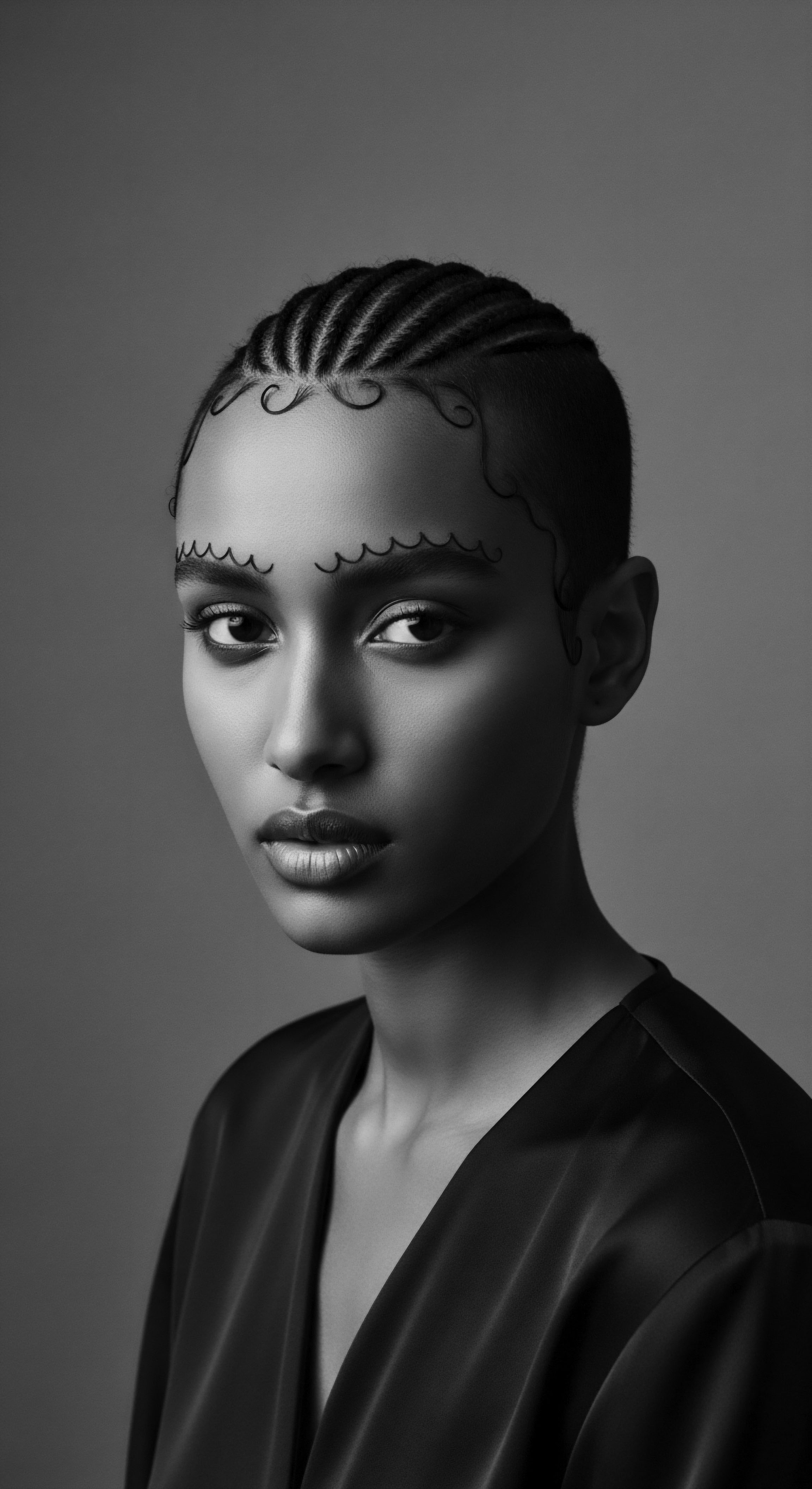
Holistic Hair Health and Ancestral Philosophy
The approach to hair health extends beyond topical applications; it encompasses holistic wellbeing, a concept deeply ingrained in many African and diasporic wellness philosophies. This includes the interplay of diet, hydration, stress management, and even spiritual balance with the vitality of one’s hair. Our ancestors understood that health was an interconnected system, and a vibrant crown was often a reflection of inner harmony.
This holistic view informs our current understanding of how nutrition impacts hair growth or how stress can lead to shedding. It bridges the gap between ancient remedies and modern nutritional science, showing how a complete picture of wellness affects hair’s strength and luster. The relay of this wisdom, from communal rituals to personal regimens, from intuitive applications to scientific explanations, ensures that hair care remains a dynamic and evolving repository of Black and mixed-race heritage , constantly adapting yet always remembering its source.

Reflection
The journey through textured hair, from its elemental biology to its profound cultural expressions, reveals a truth as undeniable as the curl pattern itself ❉ hair care, in its deepest sense, functions as a living, breathing archive of Black and mixed-race heritage . Each ritual, every choice of ingredient, every style fashioned, is a testament to survival, resistance, and the enduring celebration of identity. It is a continuous narrative, inscribed not on paper, but in the very fibers of our being, passed down through the generations. The “Soul of a Strand” ethos speaks to this intimate connection, where hair is not simply adornment, but a sacred part of self, imbued with the stories and wisdom of our ancestors.
This understanding shifts our perception of hair care from a mundane routine to a purposeful act of remembrance and affirmation. It is an act that connects us to the ingenuity of those who navigated oppression with cornrowed maps, to the pride of those who wore their Afros as symbols of liberation, and to the quiet strength of daily practices that maintained health and beauty against all odds. Our hair remains a powerful, visible link to a lineage of resilience and creativity, a constant reminder of who we are and from whom we descend. The ongoing evolution of textured hair care, marrying ancestral wisdom with scientific discovery, ensures this legacy remains vibrant, serving as a beacon for future generations, inspiring self-acceptance and profound appreciation for a unique and beautiful inheritance.
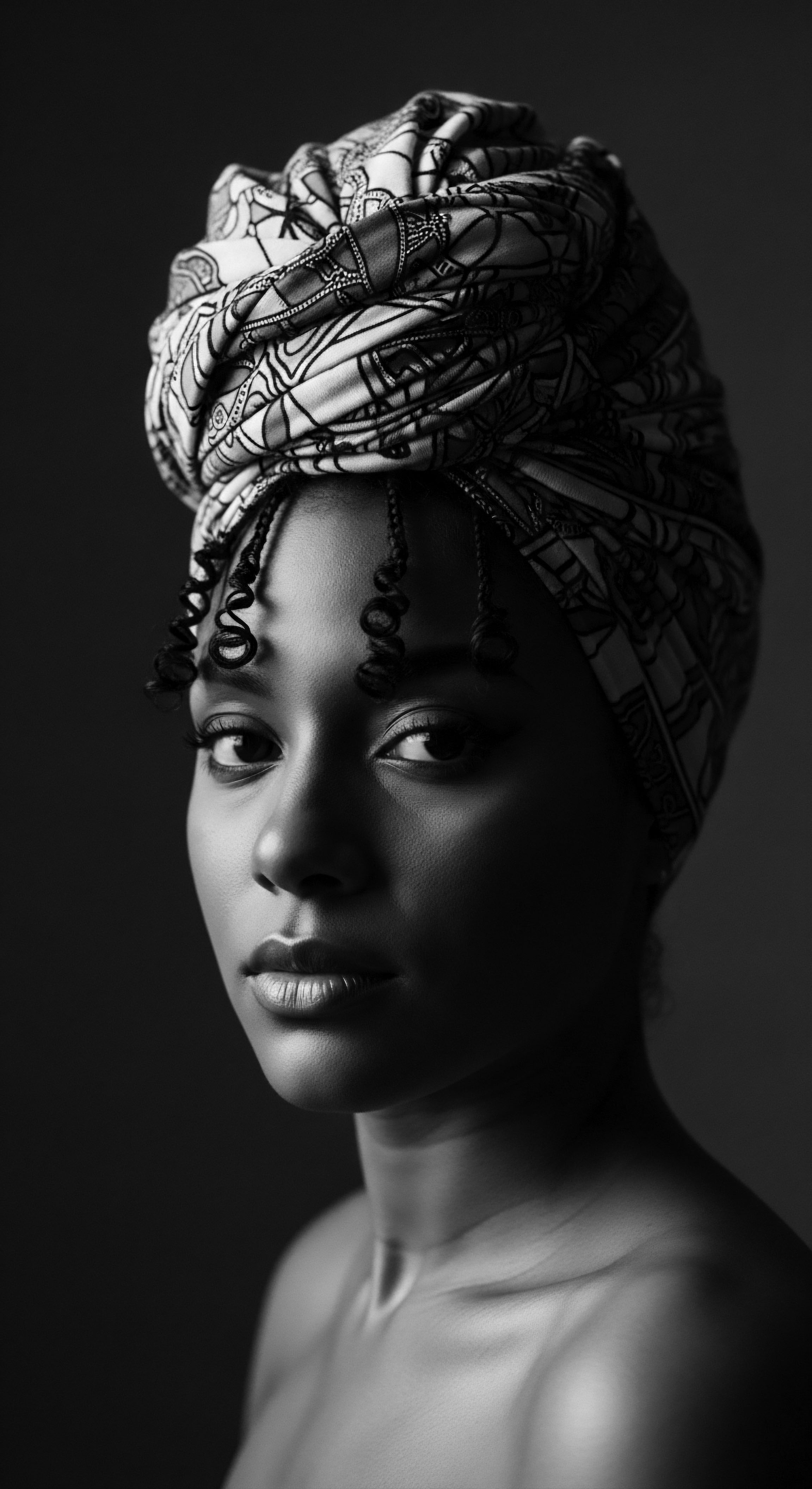
References
- Byrd, Ayana D. and Lori L. Tharps. Hair Story ❉ Untangling the Roots of Black Hair in America. St. Martin’s Press, 2001.
- Ellington, Tameka, and Joseph L. Underwood. Textures ❉ The History and Art of Black Hair. Schiffer Publishing, 2020.
- Tharps, Lori L. Same Family, Different Colors ❉ Confronting Colorism in America’s Diverse Families. Beacon Press, 2017.
